Over the past 10 years, fishing kayaks have put on the pounds. The average weight of a fishing kayak today is over 100 pounds, too heavy to lift and too heavy to safely cartop solo. The question of how to safely transport these big, modern fishing kayaks without using a roof rack has some added complications.
Jonny Wood, brand manager at Yakima, points out, “Most vehicles are rated to carry a limit of 165 pounds on their roofs.” This includes the weight of the roof rack—usually around 20 pounds—and the kayak. Wood says, “The dramatic increase in heavier fishing kayaks has led to greater demand for alternative carrying solutions.”
How to Transport Your Fishing Kayak Without a Roof Rack
1 Truck Tailgate Extension for Fishing Kayaks
Even the tailgates on full-size pickup trucks aren’t up to the task of carrying some of the larger boats. Lifting a big boat over waist height can put undue stress on the lower back. To make it easier to lift the kayak and provide more support, use a tailgate extender.
When kayak anglers working at an aluminum-extrusion manufacturer saw the need for transportation solutions for big kayaks, they convinced their parent company to spin off Boonedox T-Bone truck bed extender.
Boonedox brand manager Dave Allen explains they designed a bed extender to carry up to 300 pounds with a radial-curved arm, improving ground clearance and adjustable for different tailgate heights. “The T-bone has been our flagship product for more than five years,” he says.
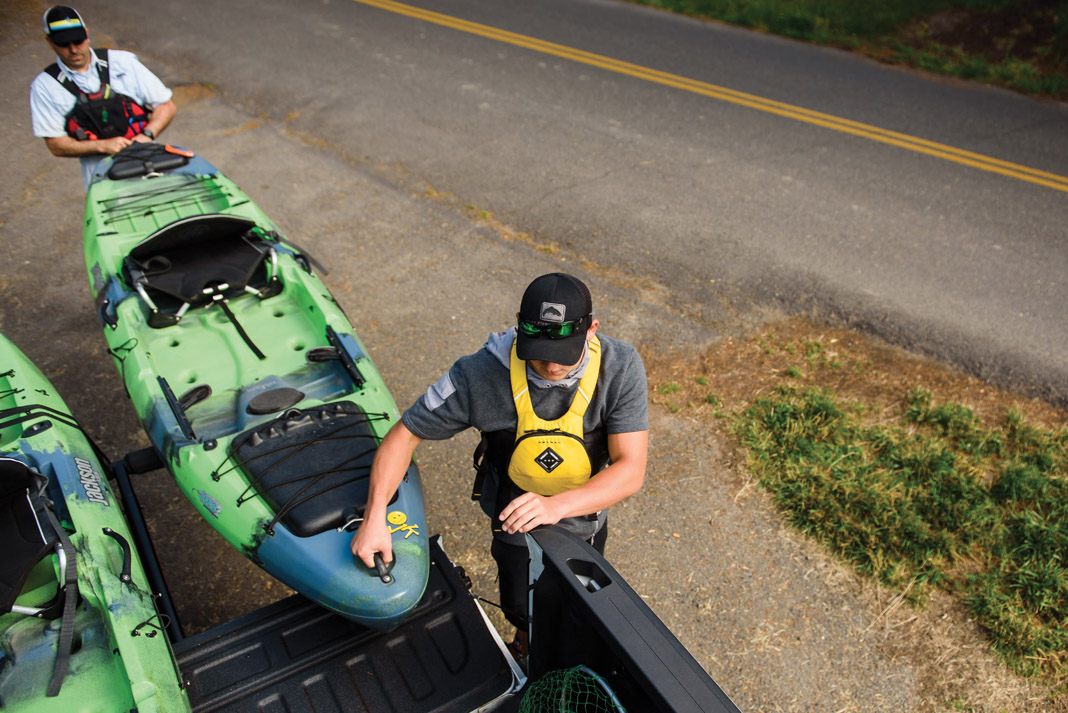
Continuing the trend, last summer Yakima released the LongArm. Built specifically for large kayaks and heavy paddleboards, the bed extender can be adjusted to three heights: tailgate down, tailgate up and roof height. The load bar can be lowered making it easier to slide a larger kayak into the truck bed without lifting the full weight of the boat.
2 Kayak Fishing Trailers
More ‘yakers are turning to lightweight trailers to transport their boats. Not only is towing a trailer more fuel efficient than cartopping, but it’s a great way to roll the boats to the water and even store them in the yard.
Yakima’s Wood explains why trailer weight is the most important consideration. “A lighter trailer is easier to use as a hand cart, too,” he says. Yakima’s RackandRoll trailer can carry over 350 pounds and weighs less than 150 pounds. To stay ahead of the curve, Yakima is releasing the EasyRider High. Wood says the new trailer will allow anglers to stack four kayaks with a total capacity of over 500 pounds.
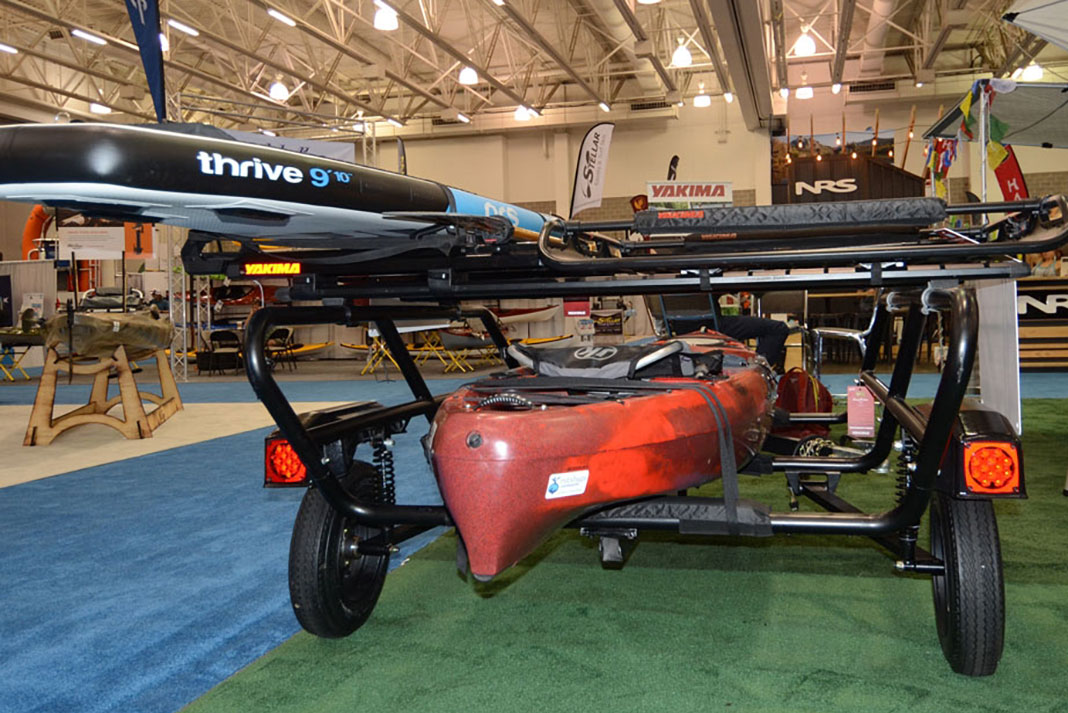
To carry kayaks and gear, SylvanSport has introduced a line of lightweight, heavy-duty trailers, which can be customized to haul kayaks, motorcycles and even load mulch or host a tent.
Vice President of marketing, Kyle Mundt, explains, “We started out researching how customers will use the trailer to maximize ergonomics and function.” They noticed anglers use a trailer for more than just hauling kayaks. “We looked at how users will load, drive, back up and store the trailer, and then we made it look cool,” Mundt says.
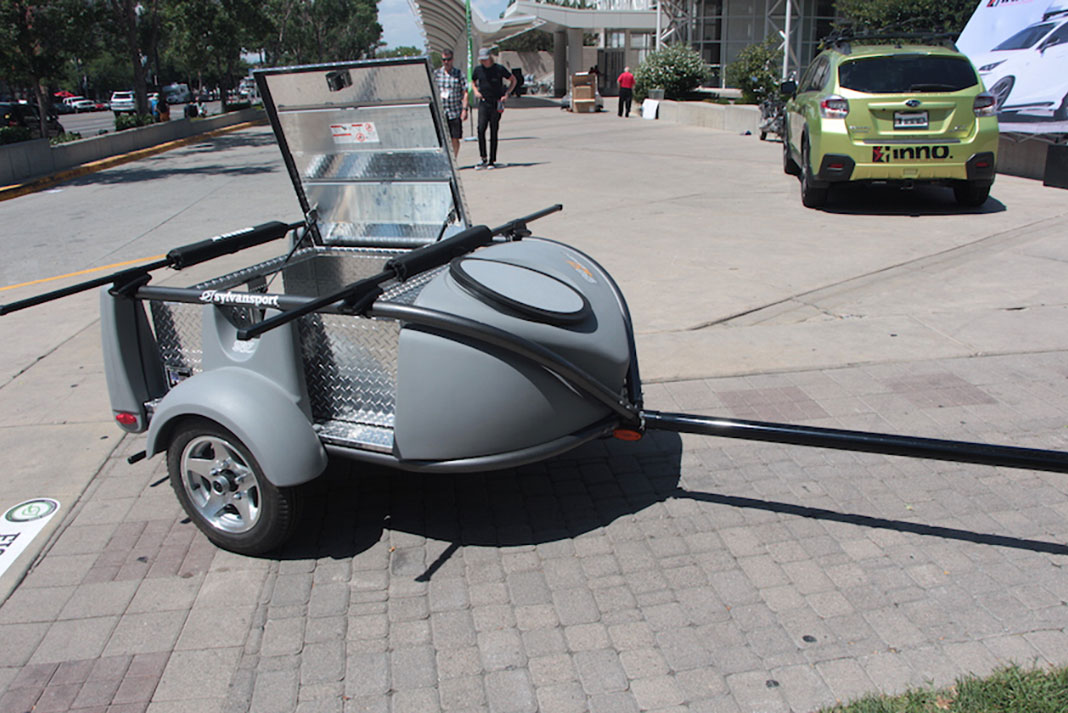
Hobie Kayaks worked with trailer manufacturer Trailex to design a special trailer and cart system for the Pro Angler 17 and Adventure Island. Carl Carbon, national sales manager at Trailex says Hobie sent their big boats and instructions to build a compatible trailer. The result is a single-boat trailer with an integrated hand cart.
“Pull up to the launch, slide the cart out of the trailer, load the kayak and roll it to the water,” Carbon says. “It’s the easiest way a single person can launch a heavy boat.”
At Malone Auto Racks, sales manager Shawn Standen has seen a steady increase in demand for robust transport solutions. “Look for a trailer with a low load height,” he suggests. Keeping the weight closer to the ground makes it easier to load the trailer and improves stability.
3 Kayak Fishing Carts
Like a paddle and PFD, a sturdy kayak cart is standard equipment for kayak anglers.
Almost 20 years ago, Wheeleez released their iconic low-pressure balloon wheel. Product development specialist Otto Werlin explains, “The inherent pliability and shock absorption make it possible to roll impossibly heavy loads over the roughest terrain.” Most recently, Wheeleez added the Small Boat Cart with 42-centimeter wheels and a beefier frame to carry up to 300 pounds. “No one else can do this,” Werlin brags.
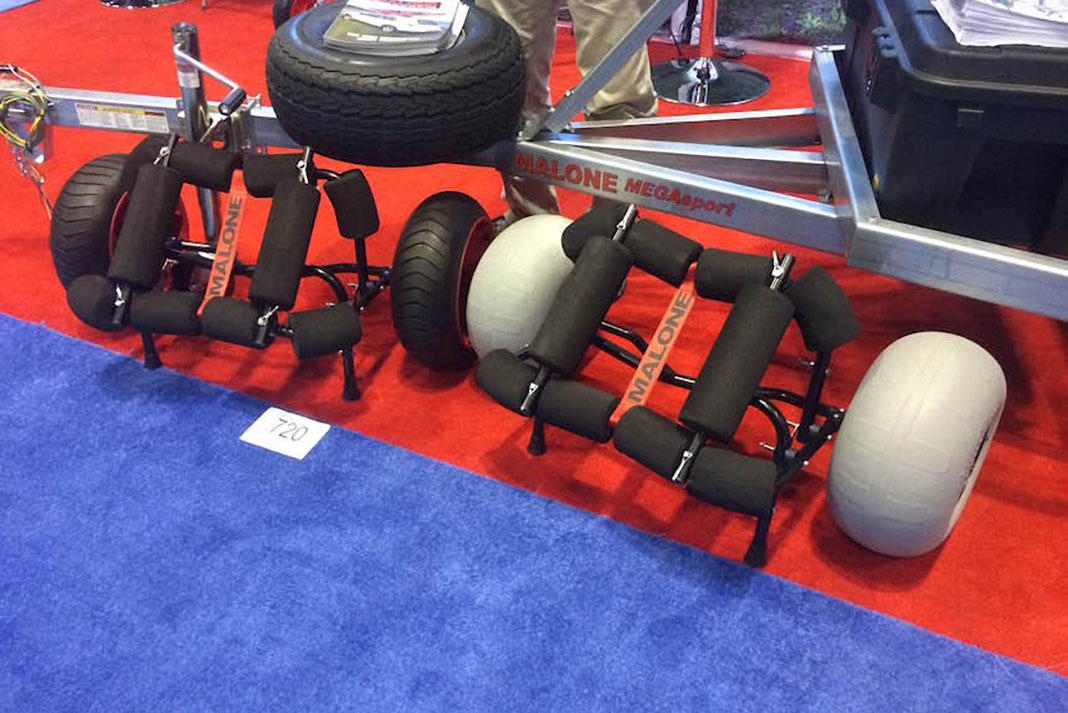
Other companies such as Malone and Kayak Cart have also come out with carts for fishing kayaks.
The folks at Boonedox have come up with a unique solution. Their new Landing Gear cart uses brackets permanently mounted to the kayak to hold the frame and wheels. This design keeps the kayak low to the ground, making it easier to lift and move. The wheels and frame can be removed in seconds or angled up to stay on the kayak.
Allen says the Landing Gear has been wildly popular as more anglers choose heavier kayaks. “We sold 4,000 units last year,” he says.
Follow us on Instagram @kayakanglermag for all your fishing questions, answers and ideas for your next adventure.
This article was first published in the Spring 2018 issue of Kayak Angler Magazine. Subscribe to Kayak Angler Magazine’s print and digital editions, or browse the archives.
You have several options when deciding how to transport a heavy fishing kayak. | Feature photo: Courtesy of Yakima

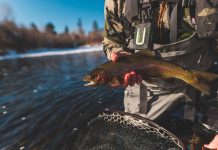
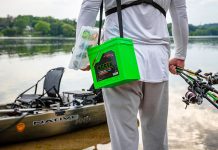




Please try to have pictures with you information on different topics . It sure helps explaining what you are talking about. Thanks
MaxxHaul Bed extender at WalMart is only $59 bucks and works great for 2/4 kayaks in bed of a truck. Super easy loading in/out. Best deal I found.
The Sylvansport Go Easy is a great trailer, I’ve had one for about a year and use it when I need to haul my Hobie Pro Angler and Outback at the same time.
Also, it is very doable to cartop boats as big as the Hobie Pro Angler 14 which I do quite often using the Rhino Rack T Load (here’s a video I made of me using it: https://www.youtube.com/watch?v=oKSUkB1M39c&t=29s).
Not sure option #3 relates to a roof top alternative. That is more focused around getting from the car to the launch site while the other two are focused on getting the yak to the launch site. That said, WS makes a great cart. Sold my C-tug as it didn’t fit the hull of my yak and made transporting it an arduous chore. The WS cart is fast and works great for my needs.